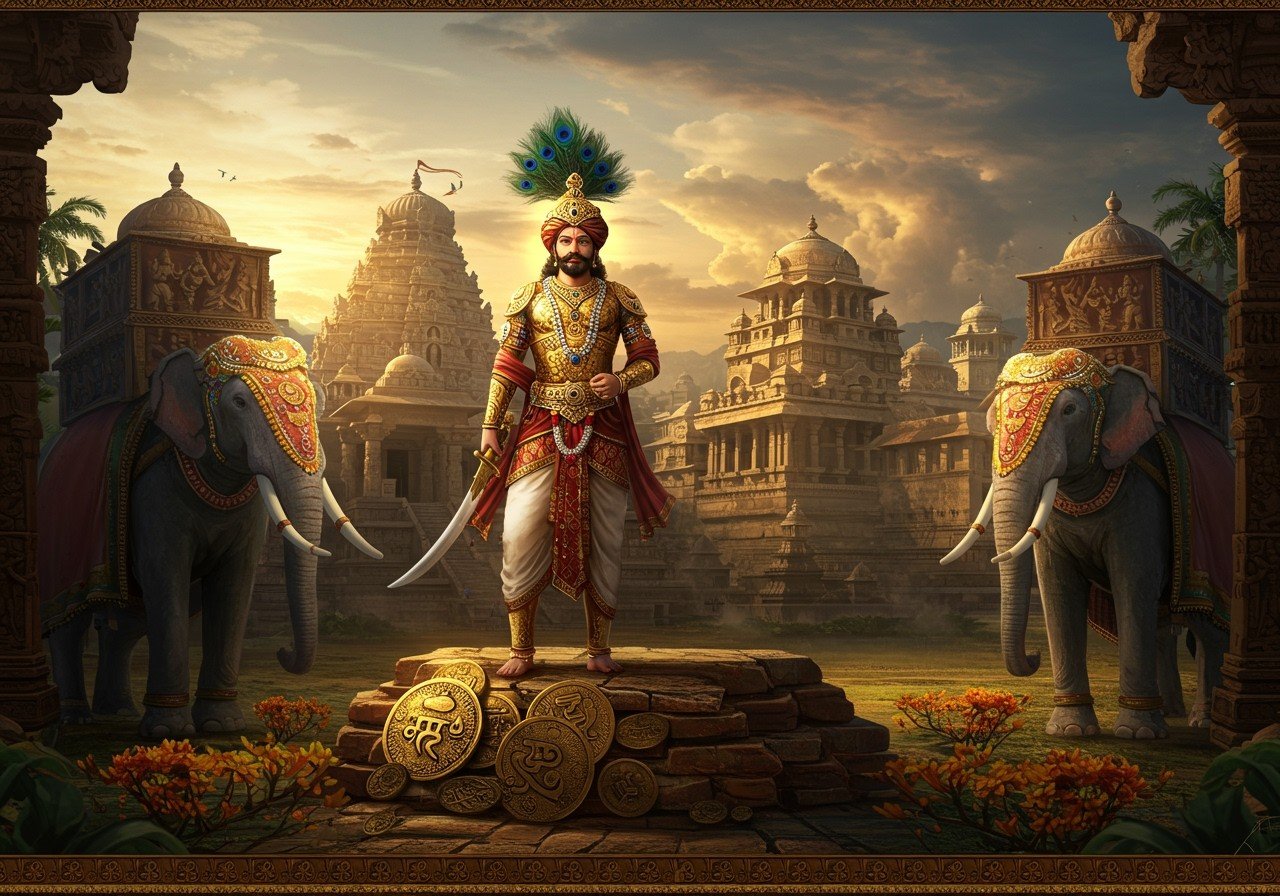
The Kadamba Dynasty, a significant power in ancient India, shaped the cultural and political landscape of southern India. Founded around 345 CE, their reign, primarily in present-day Karnataka, left an enduring legacy. This blog delves into their origins, ascent, challenges, and lasting impact.
Origins and Establishment
The Kadamba Dynasty’s story begins with Mayurasharma, a Brahmin scholar turned warrior-king. Around 345 CE, he established the kingdom with Banavasi as its capital, a hub of activity and administration. Early alliances and strategic conflicts played a vital role in solidifying Kadamba rule, establishing their presence in the region.
- Founder: Mayurasharma transitioned from scholarly pursuits to kingship, marking a pivotal moment in the region’s history. His rebellion against the Pallavas set the stage for the Kadamba Dynasty’s emergence.
- Location and Capital: The dynasty was primarily located in present-day Karnataka, with Banavasi serving as the capital city. This strategic location contributed significantly to their influence and control.
Rise to Prominence
The dynasty flourished under Mayurasharma’s successors, notably Kakusthavarma. Strategic marital alliances, including ties with the Gupta Empire, strengthened their political standing. Effective governance and administrative reforms further solidified their power. This era witnessed significant advancements in architecture, literature, and the arts, reflecting the dynasty’s patronage and cultural influence.
- Expansion and Alliances: The Kadambas expanded their territories through strategic conquests and alliances. Marriages with powerful dynasties, like the Guptas, helped secure their position and influence.
- Cultural Contributions: The Kadamba period witnessed a flourishing of art, architecture, and literature. Temples, sculptures, and inscriptions from this era stand as testaments to their cultural achievements.
Challenges and Decline
Internal conflicts, particularly succession disputes, weakened the dynasty. The rise of rival powers, such as the Chalukyas and Pallavas, posed significant challenges. The invasion by Pulakeshin II of the Chalukya dynasty marked a turning point, leading to the Kadambas’ eventual decline. The kingdom fragmented into smaller entities, further diminishing their power. External factors, including shifts in trade routes and changing climatic conditions, likely contributed to their downfall.
- Internal Strife and External Threats: Internal succession disputes weakened the dynasty, making them vulnerable to external threats. The rise of powerful rivals like the Chalukyas and Pallavas put immense pressure on the Kadamba kingdom.
- Defeat and Fragmentation: The invasion by Pulakeshin II proved to be a decisive blow, leading to the Kadambas’ defeat and the fragmentation of their kingdom. This marked the beginning of their decline as a major power.
Legacy and Impact
Despite their decline, the Kadambas left a lasting legacy. Architectural marvels like the Madhukeshwara Temple in Banavasi stand as testaments to their sophisticated craftsmanship. Their contributions to Kannada literature enriched the language and literary traditions. Their governance and administrative models influenced subsequent dynasties. Preserved inscriptions offer valuable insights into their history and culture.
- Architectural Marvels: The Kadambas left behind a rich architectural legacy, with temples like the Madhukeshwara Temple showcasing their unique style and craftsmanship. These structures continue to inspire awe and admiration.
- Cultural and Literary Influence: The dynasty made significant contributions to Kannada literature and culture. Their influence can be seen in language, literature, and artistic traditions, shaping the cultural landscape of the region.
Explore the rich history of Indian temples further with these related articles:
- Kandariya Mahadeva Temple: Religious Importance and History
- Badami Cave Temples: Chalukya Dynasty Architecture
Enhance your spiritual journey with authentic puja items from Poojn.in. We offer a wide selection of high-quality products for all your puja needs:
Conclusion
The Kadamba Dynasty’s story is a compelling narrative of ambition, achievement, and resilience. From Mayurasharma’s bold beginnings to their eventual decline, they left an indelible mark on India’s history. Their contributions to architecture, literature, and administration continue to inspire and intrigue, reminding us of their enduring legacy.


